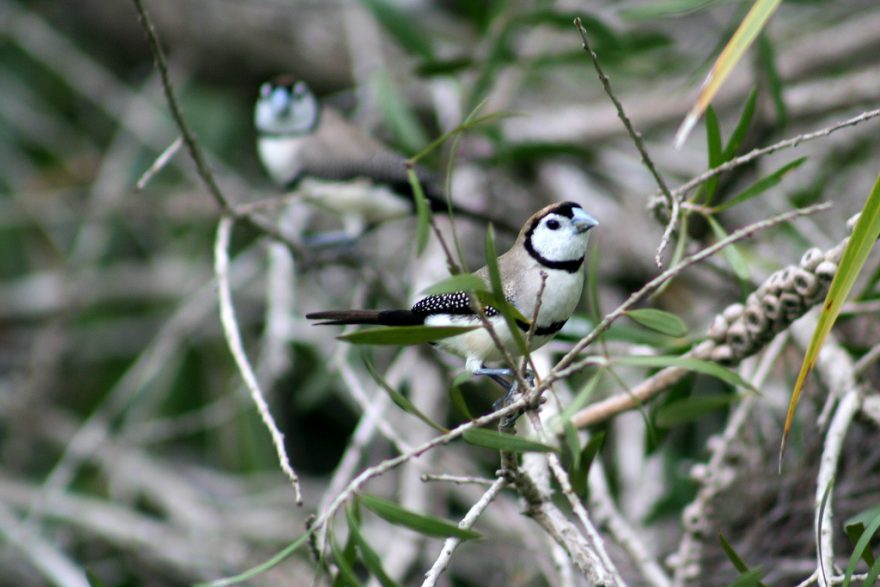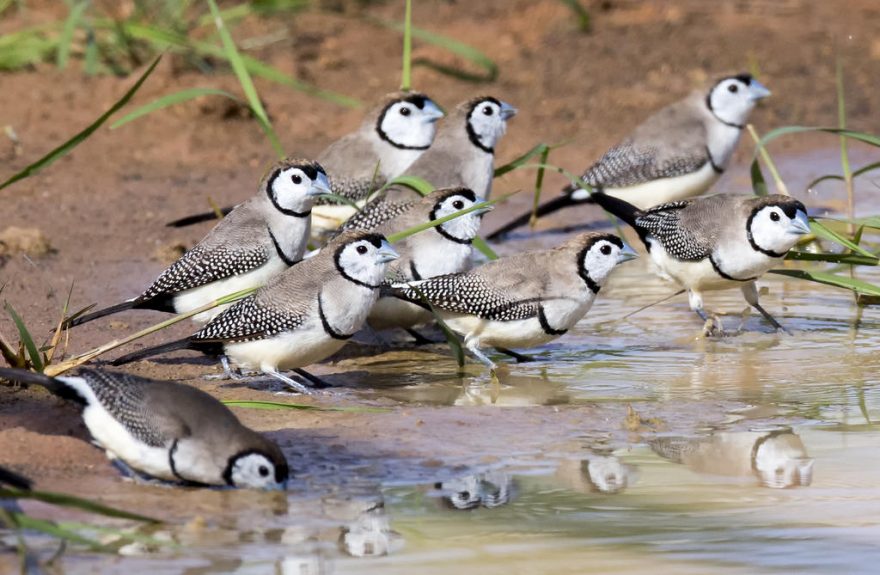The Double-barred finch is a small estrildid finch native to northern and eastern Australia. They are sometimes known as the Bicheno’s finch or the Owl finch. There are two subspecies; the white rumped Taeniopygia bichenovii bichenovii and the black rumped Taeniopygia bichenovii annulosa.

Housing & Compatibulity
The Double-barred finch is closely related to the Zebra Finch. They should not be housed together to avoid accidentally breeding hybrids.
Best breeding results are achieved in single pair aviaries, but they will also readily breed in a colony or mixed collection. Double-barred finches will live comfortably with a variety of other placid finch species. Popular cohabitants including the painted firetails, gouldians, cordon bleu waxbills, star fiches, African firefinches, and orange-breasted waxbills.
The Double-barred finches’ natural habitat consists of dry woodlands and open forests. These conditions should be emulated in the aviary to achieve good breeding results. Native Australian trees and shrubs are appreciated – both for perching and nesting.
Diet & Feeding
A quality finch seed mix forms the basis of most finch diets. Seed lacks many essential vitamins and minerals which must be compensated for by introducing other foods. Sprouting seed increases its nutritional value and is a cheap way to improve your bird’s health. Freshly grown green seed heads should also be offered frequently.
A variety of leafy greens should be provided throughout the year. Kale, bok choy, endive and silverbeet are the most nutritious and will be readily eaten. Spinach can also be given, but only sparingly as it can contribute to calcium deficiency.
Commercial soft finch food mixes can also be provided for an added nutrient boost, particularly when breeding. Live food, especially mealworms, can be offered sparingly throughout the year. Live food is especially beneficial around the breeding season, especially when the birds are raising chicks.
Do not feed anything from the list of forbidden foods.

Breeding
Wild Double-barred finches use fine grass to build elaborate multi-chamber nests in bushes and trees. Those kept in an aviary have adapted to use a standard commercial woven nest or Gouldian-style nesting boxes.
They typically lay 3-6 eggs in each clutch, which are incubated by both parents for approximately 14 days. Young birds fledge the nest at three weeks of age and are usually independent after a further three weeks. Adult plumage is attained at three months of age.
Double-barred finches will breed throughout the year, however best results are achieved in spring and early autumn. They may produce up to three clutches per year.
Young birds can be kept with their parents. It’s important that adult birds have leg rings to distinguish them from their offspring, who will attain adult plumage quite quickly.
Mutations
There are very few mutations of the double-barred finch. A fawn mutation is seen infrequently encountered. Pied double-bars also pop up occasionally.
Sexing
Double-barred finches are notoriously difficult to sex. DNA sexing is needed to determine gender with absolute certainty.
Males are generally slightly larger than females, and have a wider and straighter black band on the top of their head. Hens supposedly have narrower headbands that are shaped like the letter C.
Some breeders find it easier to establish pairs by introducing half a dozen birds to an aviary and allowing them to form pairs naturally.
Health
A strict worming and parasite control regime is essential to ensure the long-term health of any finch collection. A healthy double-barred finch has an expected lifespan of 6-7 years.